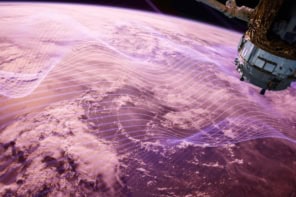Physics-based simulation techniques are helping climatologists predict how economic, political and scientific decisions will influence climate change.
In the summer of 1988 a major heat-wave in the US alerted the world’s media to the issue of climate change. Ever since, climate scientists have been asked whether such extreme weather anomalies, which include catastrophic floods and hurricanes, occur naturally or whether they are the result of a rise in global temperature due to human activity. The problem is that climate is a statistical phenomenon, which makes it difficult to find definitive answers to these questions.
With a few exceptions, such as the six-monthly forecasts of the El Niño phenomenon, climate anomalies cannot be predicted. Climate models can, however, predict the probability distributions of variables such as precipitation and temperature, and the changes they predict are indeed consistent with recently recorded anomalies. Although the total number of observed climate extremes is small, the data suggest that the increase in the frequency of such events is most likely due to the global warming caused by the emission of greenhouse gases such as carbon dioxide.
This anthropogenic, or man-made, climate change is predicted to occur by climate models and, moreover, it is clearly evident today. This is based not on extreme events but mainly on measurements of the global mean temperature. These measurements extend over longer times and provide a more reliable estimate of the ratio of the predicted anthropogenic climate-change signal to the natural-variability “noise”. Even without sophisticated statistics, the signal is now well above the noise.
The emergence of the anthropogenic signal has changed both the public and the scientific perception of the climate issue. Climate change due to human activity is no longer the abstract possibility that experts had been discussing since the end of the 19th century, when Svante Arrhenius – the Swedish chemist who won the Nobel prize in 1903 – first pointed out that carbon-dioxide emissions from fossil fuels were warming the Earth. People now expect politicians to act. Moreover, climate researchers have started to realize that their ever more detailed and expensive computations cannot be carried out independently from the debate on climate policy. The concern is not so much the temperature increase of 0.7°C that has occurred since the end of the 19th century, but the projected 3°C warming that will happen this century if greenhouse- gas emissions continue to grow unabated. Climate researchers now have to interact with economists, sociologists and political scientists in order to assess the full implications of climate change for sustainable development.
In the June issue of Physics World Klaus Hasselmann, director emeritus of the Max Meteorology in Hamburg in Germany, Hans Joachim Schellnhuber, scientific director of Change Research in Norwich in the UK and Ottmar Edenhofer at the Potsdam Institute for Climate Impact Research describe this work in more detail. All authors are members of the European Climate Forum.



